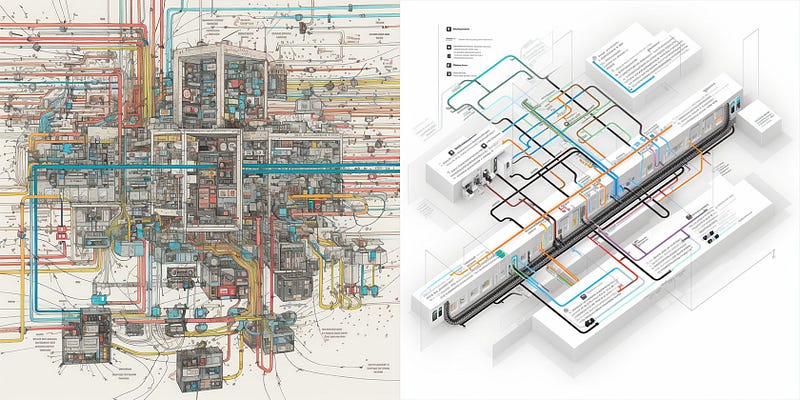Guerilla Tactics for IT Architects & Developers
Five unconventional tactics to reach success

Guerilla Tactics for IT Architects
In the dynamic world of IT architecture, sometimes conventional approaches aren’t enough to tackle complex challenges and achieve your goals.
Enter the realm of guerilla tactics — unconventional strategies that can help IT architects cut through the red tape and drive impactful change.
This article will explore five powerful and out-of-the-box tactics that can empower you to overcome obstacles, influence stakeholders, and pave the way to success in your IT architecture endeavors.
These guerilla tactics benefit IT architects and are invaluable for developers who aim to introduce new tools, frameworks, techniques, or languages within their organization.
Even if you don’t employ these tactics yourself, recognizing their use within your organization can help sharpen your political instincts and improve your ability to navigate the complexities of IT architecture.
1. Using the big ball of mud to your advantage

One of the most effective guerilla tactics for IT architects is to harness the power of visualization to persuade stakeholders of the need for a system overhaul.
I have used this tactic to my advantage. While working on a project with multiple services communicating directly with each other, I suggested the introduction of a central broker for messaging.
This approach aimed to streamline and manage communication channels more effectively. By visualizing the existing communication lines and comparing them to a centralized broker system, it became evident that the latter significantly reduced complexity and improved overall system performance.
When faced with a complex, interdependent architecture, creating a drawing that showcases all the systems, components, and their relationships can be a game-changer.
A sufficiently large system often results in a messy, convoluted diagram, aptly called the “big ball of mud.”
You can highlight the stark contrast between the two by juxtaposing this chaos with a well-organized visualization of the proposed new system, with its connections neatly grouped and streamlined.
This powerful visual comparison can serve as a compelling argument for change, convincing stakeholders of the necessity to invest in a rewrite or restructure of the system.
In essence, you’re using the complexity and disorder of the existing system as a persuasive tool to emphasize the benefits and improvements offered by the new architecture.
2. Leverage a Skunkworks team

Quite some time ago, I worked at an organization that developed a software product delivered via CD-ROMs. Yep, I’m old enough to remember those shiny coasters!
The packaging process was managed by a fragile script, which frequently caused issues and delays.
A colleague discovered a tool that could streamline the product's creation, configuration, and packaging, ultimately saving us time and effort.
However, management was reluctant to invest in the new tool or take the risk of changing the existing packaging procedure.
Undeterred, my colleague took matters into his own hands. He spent his personal time rewriting a portion of the packaging process using the tool to demonstrate its benefits.
Once he completed the task, he presented a demo to the entire team and management. This demonstration showcased the tool’s capabilities and potential time savings.
As a result, management recognized the tool's value, approved the investment, and reimbursed my colleague for the time he had invested.
Sometimes organizations, especially larger ones, hesitate to commit to a large-scale overhaul of their existing IT systems, which is understandable.
In such cases, the “Leverate a Skunkworks team” guerilla tactic can strategically gain momentum for change.
In larger organizations, it often won’t be feasible for individuals to invest their free time demonstrating the value of a new approach or tool, as seen in the anecdote.
Instead, you assemble a small, highly skilled team from within the organization, carefully selecting those who can work efficiently and effectively together.
This agile team can focus on developing a targeted solution that demonstrates value quickly, showcasing the benefits of the proposed IT changes. The small team size allows for rapid iteration, unencumbered by established organizational processes and bureaucracy constraints.
By demonstrating the potential value of the new system in a tangible, manageable way, you’ll be better positioned to gain the support and resources needed for broader implementation, using this initial success as a stepping stone.
3. Leverage internal influencers

To make an impact in an organization, it’s crucial to understand how the gears turn.
Identify key decision-makers or influencers within the organization who can support your cause. Build relationships with these individuals, share your ideas and concerns, and enlist their help promoting your initiatives.
Knowing the inner workings and dynamics will help you navigate the organization effectively and achieve the desired outcomes.
The coffee machine is your friend. Casual conversations can be a powerful tool in building relationships and influencing others within the organization. The coffee machine or the water cooler can be an informal gathering spot to discuss your ideas and plans with colleagues and influencers.
These casual chats can help you gain valuable insights, gauge opinions, and gather support for your initiatives. By leveraging these informal networking opportunities, you can increase the visibility of your projects and gain allies in your quest for change.
4. Implement a Trojan Horse

The “Trojan Horse” strategy involves embedding a desired feature or improvement within a larger, unrelated project with stakeholder support.
By integrating your proposed change as a necessary or beneficial component of an existing initiative, you can gain approval and resources for your idea without drawing attention to it directly.
To apply this tactic, identify ongoing organizational projects that align with your proposed IT architecture change. Evaluate how your idea complements or enhances the project’s objectives and outcomes.
Then, present your proposal as an integral part of the ongoing initiative, highlighting its synergies and benefits.
This approach can help you secure the necessary resources and support for your idea while minimizing resistance from stakeholders who may be hesitant to endorse standalone IT architecture changes.
5. Encourage bottom-up innovation

In many organizations, change is often driven from the top down, with senior management dictating the direction and pace of innovation.
However, with the constant emergence of new IT possibilities, organizations must adapt and transform these opportunities into effective solutions.
Employees often at the forefront of identifying business challenges are best equipped to recognize how these innovative IT advancements can address specific issues. Encouraging bottom-up innovation empowers employees to contribute their insights and expertise, resulting in more targeted and impactful solutions for the organization.
To implement this tactic, empower individuals and teams within the organization to contribute their ideas, suggestions, and solutions for IT challenges.
Please provide them with the necessary resources, tools, and autonomy to explore and experiment with their ideas. This could involve setting up regular brainstorming sessions, providing an internal platform for idea submission, or implementing a reward system for successful initiatives.
By encouraging bottom-up innovation, you create a groundswell of support for change, as team members are more likely to embrace and advocate for ideas they have helped shape.
Moreover, this approach fosters a sense of ownership and pride among employees, leading to increased morale, engagement, and job satisfaction.
Conclusion
Guerilla Tactics for IT Architects offers an innovative and insightful approach to navigating the ever-evolving world of information technology.
By embracing unconventional strategies and rethinking traditional methodologies, IT architects can effectively address complex challenges, enhance collaboration, and drive impactful solutions.
By adopting a guerilla mindset, IT architects can be adaptable, resourceful, and creative, elevating their projects and ensuring the successful delivery of valuable IT systems.
While adopting guerilla tactics to stay innovative and adaptable in the IT landscape, architects must always remain ethical.
Upholding ethical principles ensures that architects make responsible decisions that prioritize the well-being of stakeholders, maintain data privacy, and promote sustainable practices.
Balancing innovation with ethical considerations will foster trust and long-lasting, positive impacts on the industry and society as a whole.
In today’s fast-paced and competitive environment, it is crucial for IT architects to stay ahead of the curve and continually learn from the best practices shared in this article. Let us all boldly embrace guerilla tactics to create robust, innovative, and effective solutions for the digital age.




